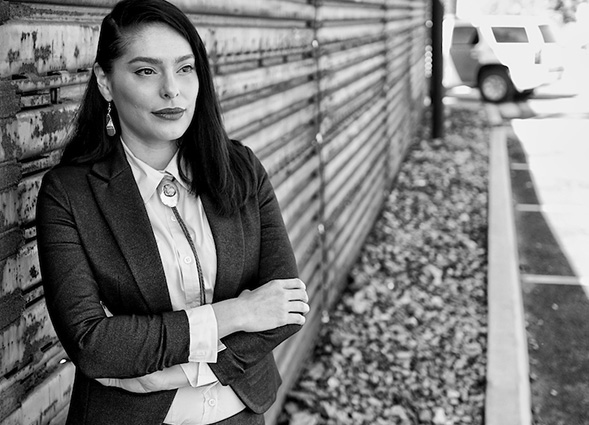Transborder Lives
Students living the transborder life say it is an identity and culture all to itself.

This story is featured in the spring 2019 issue of 360: The Magazine of San Diego State University.
When the northward journey of a Central American migrant caravan prompted closure of the U.S.-Mexico border last November, San Diego State University President Adela de la Torre issued a statement offering support and assistance to students, faculty and staff members affected by the shutdown. No one was happier to receive the message than doctoral candidate Vannessa Falcón Orta (’08).
Falcón, 33, lives, studies and conducts research on both sides of the border. Now in the fourth year of a joint Ph.D. program in education at SDSU and Claremont Graduate University, she has carved a new research niche with her work on transborder students in higher education.
Falcón explores concepts such as campus climate, student-led grassroots initiatives, transborder identity and the intersections of race, ethnicity and gender. Her life informs her scholarship.
Born in Los Angeles, Falcón grew up in both the United States and Mexico. In sixth grade, she began crossing the border for school, which made living arrangements difficult. “It was challenging, but now I draw a lot from that,” she said. “It became part of who I am today.”
Living a transborder life is more than just an experience, Falcón asserted. “It’s an identity and a culture in and of itself that is very much salient to the selves and beings of these students and who they are.” Through quantitative, qualitative, and visual methodologies depicting the voices of transborder students, she hopes to define and distinguish, among other things, the shared traits and characteristics of these individuals.
Falcón said transborder students are often an invisible population, even to themselves. That’s why in 2015 she started the Facebook group Estudiantes Transfronterizos, which grew into a student group at SDSU called the Transfronterizx Alliance Student Organization (TASO). Now officially recognized by SDSU, the organization helps create an equitable and inclusive campus environment for the university’s transborder community.
For Sara Gonzalez-Quintero (’18), TASO was a revelation. Before discovering the organization, she had difficulty meeting others who could relate to her transborder experience. Those who traverse the border infrequently, she said, often discount the emotional and psychological toll.
“It’s always present,” Gonzalez-Quintero said of the crossing experience. “Whatever interaction you have with the border you take with you the rest of your day, and there are high levels of anxiety that go with it.”
Gonzalez-Quintero had difficulty finding a comfortable social and cultural fit in her first two years at SDSU. She could empathize with being Latina in this country, but her life experiences were different. She felt inaccurately categorized by one group or another.
“We are in between,” she said. “Most of us are Mexican-Americans, but that doesn’t mean we have to be relegated to one country. It’s about transitioning all the time, and sometimes you feel you’re from both, but sometimes you feel like you’re from neither.”
Randy Timm, SDSU dean of students, has worked with underserved groups to alleviate the feelings of isolation they may experience on campus.
“Vannessa has a great sense of the pulse of the transborder community,” said Timm. “She has been an incredible spokesperson.”
This spring, Falcón introduced the Transborder Student Ally Program to train faculty, staff and students in ways to support SDSU’s transborder community. “I see myself as a change agent, and to be a change agent you do need to acknowledge and work within institutions,” she said.
If President de la Torre’s November border message is any indication, SDSU is gaining a better awareness of transborder students and their needs. Thanks to Falcón’s efforts, a community once largely overlooked is achieving much greater visibility.


